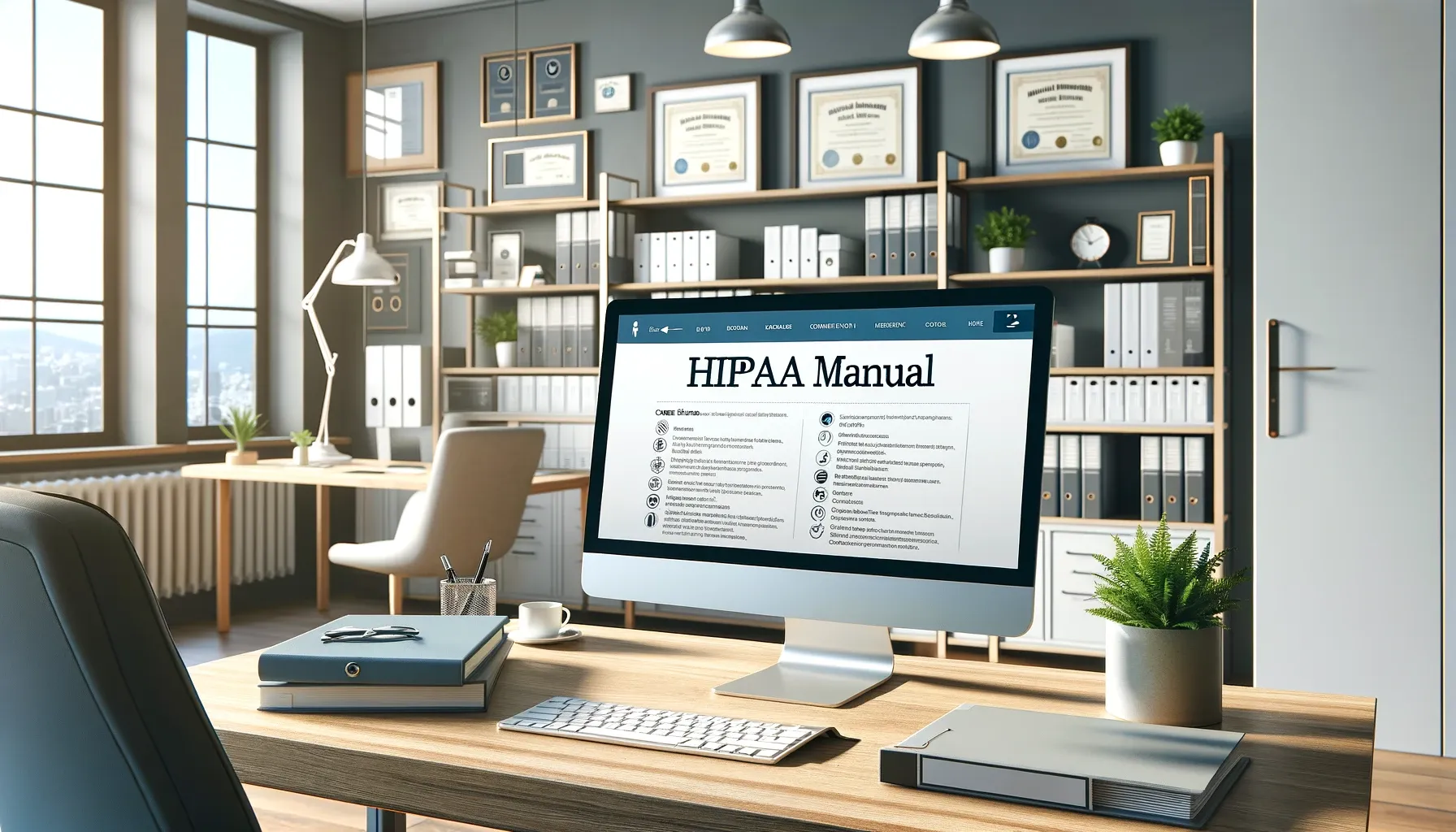9 Core Elements of a HIPAA Manual


1. 🔴 HIPAA Policies and Procedures
- Privacy Policies: Detailed policies on how patient information is collected, used, and disclosed.
- Security Policies: Measures to protect electronic protected health information (ePHI), including administrative, physical, and technical safeguards.
- Breach Notification Policies: Procedures for identifying, responding to, and reporting breaches of PHI.
- Schedule of Audits/Training Log
2. 🔴 Patient Rights - Forms & Notices
- Notice of Privacy Practices (NPP): Informing patients of their rights under HIPAA and how their information will be used.
- Access to PHI: Procedures for patients to access their own health information.
- Amendments to PHI: Processes for patients to request corrections to their health information.
- Accounting of Disclosures: Providing patients with a record of when and why their information has been shared.
3. 🔴 Vendor and Organizational Requirements
- Business Associate Agreements: Contracts with third parties that ensure they comply with HIPAA when handling ePHI.
- Complaint Procedures: Processes for patients to file complaints regarding HIPAA violations.
- Documentation Requirements: Guidelines for maintaining HIPAA related documentation.
4. 🔴 Physical Safeguards
- Facility Access Controls: Measures to control physical access to areas where ePHI is stored.
- Workstation Use and Security: Guidelines for the proper use of workstations that access ePHI.
- Device and Media Controls: Policies for handling and disposing of electronic devices and media that contain ePHI.
5. 🔴 Administrative Safeguards
- Risk Analysis and Management: Regular assessments to identify potential risks to ePHI and steps to mitigate these risks.
- Sanction Policy: Disciplinary actions for employees who violate HIPAA policies.
- Workforce Training: Regular HIPAA training for all staff members to ensure compliance.
6. 🔴 Technical Safeguards
- Access Controls: Policies for ensuring that only authorized personnel have access to ePHI.
- Audit Controls: Procedures for tracking and monitoring access to ePHI.
- Integrity Controls: Measures to ensure that ePHI is not altered or destroyed in an unauthorized manner.
- Transmission Security: Guidelines for protecting ePHI during electronic transmission.
7. 🔴 Incident Response and Reporting
- Incident Response Plan: Steps to take in the event of a security incident or breach.
- Breach Notification: Detailed procedures for notifying affected individuals, the Department of Health and Human Services (HHS), and potentially the media in case of a significant breach.
8. 🔴 Regular Reviews and Updates
- Annual Review: Regularly reviewing and updating the HIPAA manual to ensure compliance with new regulations and changes in the practice.
- Continuous Improvement: Implementing changes based on audit findings, risk assessments, and feedback from staff and patients.
9. 🔴 Resources
- Templates and Forms: Sample forms and templates for documenting HIPAA compliance activities.
- Resources: Links to additional resources, such as HHS guidelines and compliance checklists.
